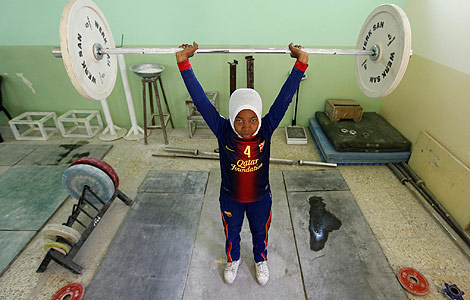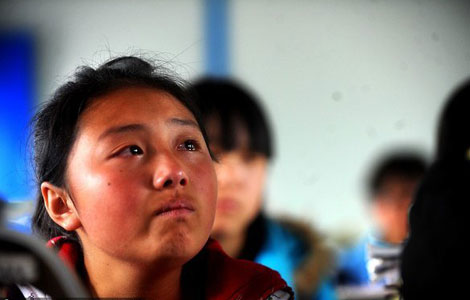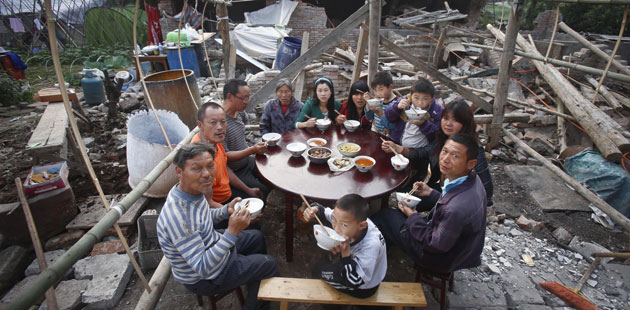SOEs need to look at the bigger picture
Updated: 2013-05-06 08:11
By Xiong Bingwan (China Daily)
|
|||||||||||
Not all plant relocations are advisable, as they may adversely affect employees and communities. Although in some cases the effects will be temporary and can be internalized by the market over time, this is not the case when a single enterprise is the major economic engine of a city.
The relocation of dominant plants has been accelerating over the past decade. For example Foxconn, the electronics manufacturer, has laid off 73 percent of its 400,000 employees in southern China, as it has relocated more than 70 percent of its plants to northern China. Dongfeng Motor Corp, a State-controlled automobile manufacturer in Shiyan, Hubei province, along with more than 200 motor-related ancillary businesses in the city, which together contributed more than 60 percent of Shiyan's GDP, relocated to Wuhan, another city in Hubei province, where they have better access to advanced personnel resources and commercial opportunities. With the economic transformation taking place across China the relocation of industry is likely to accelerate in the coming years.
Until now, the problems caused by the relocation of dominant plants have been largely neglected, as the adverse effects of dominant plant relocations are generally regarded as an inevitable result of the adoption of a market economy and the freedom to relocate plants promotes social efficiency. But this is highly misleading, not only because it miscalculates the social efficiency in the case of dominant plant relocations, but also because it ignores China's domestic situation and the possibility of alternative policies that can mitigate or prevent the devastating effects on local communities caused by the relocation of dominant plants.
The relocation of dominant plants are likely to have enormous negative effects on at least three parties - former employees, ancillary businesses and their employees, as well as the communities in which they formerly operated. Studies conducted in the US show that the relocation of dominant plants can result in a devastating loss of income, increased health issues and the erosion of a community's identity.
To make matters worse, the measures in place to address small or medium-sized layoffs - such as an employer's obligation to provide 30-days advance notice in the case of mass layoffs, employees' entitlement to severance pay of up to 12-months' wages and unemployment insurance compensation - will not mitigate the devastating effects on workers and the community if a dominant plant relocates. These measures are just expedient ways to provide the laid off workers with temporary financial aid while they seek new jobs. But in cities where a single dominant enterprise and its ancillary businesses drive the economy, these measures are not enough to compensate for their relocation and cannot mitigate the loss of a dominant plant.
People's mobility varies from generation to generation and from state to state. But in general, the mobility of those who have lived in a city for a long time is very low, and a large percentage of them are not ready to live in new areas even if they can find new jobs there. Even today, when the family size is decreasing to the so-called core family of one couple with one child, most people still care a great deal about their social ties with relatives, friends and colleagues within their communities.
Although there is a wide consensus that the reform of State-owned enterprises in China should be market-led, this paradigm is not categorical. In the case of dominant SOEs, such as DMC in Shiyan, if corporate decisions that are most profitable for the enterprise will have devastating repercussions on the large population, they cannot be regarded as the best choice for the country. Therefore, dominant SOEs ought to consider the potentially adverse effects of any relocation.
Government agencies that exercise SOE ownership should make joint efforts with other government agencies to retain dominant plants in their current locations. Once an area has developed to a certain level, continuing centralization not only puts an excessive burden on the city's infrastructures and public service, it also limits the development of neighboring regions, so the national policy of State investment should encourage the geographical dispersion of new plants, rather than concentrating them in overcrowded cities. That is to say, governments at various levels should collectively build up Shiyans, instead of merely transferring DMCs to Wuhan.
The author is a lecturer in Law and Economics at Renmin University of China.
(China Daily 05/06/2013 page8)
Today's Top News
Xi pins hope on youth for innovation, advancement
China playing bigger role in Middle East
FM wraps up tour on
note of stability
Museum window vandalized
Seawater can save thirsty country
New markets buy big at trade fair
Taking Midi to the max
Buyers lured by local goods
Hot Topics
Lunar probe , China growth forecasts, Emission rules get tougher, China seen through 'colored lens', International board,
Editor's Picks

|

|

|

|

|

|





